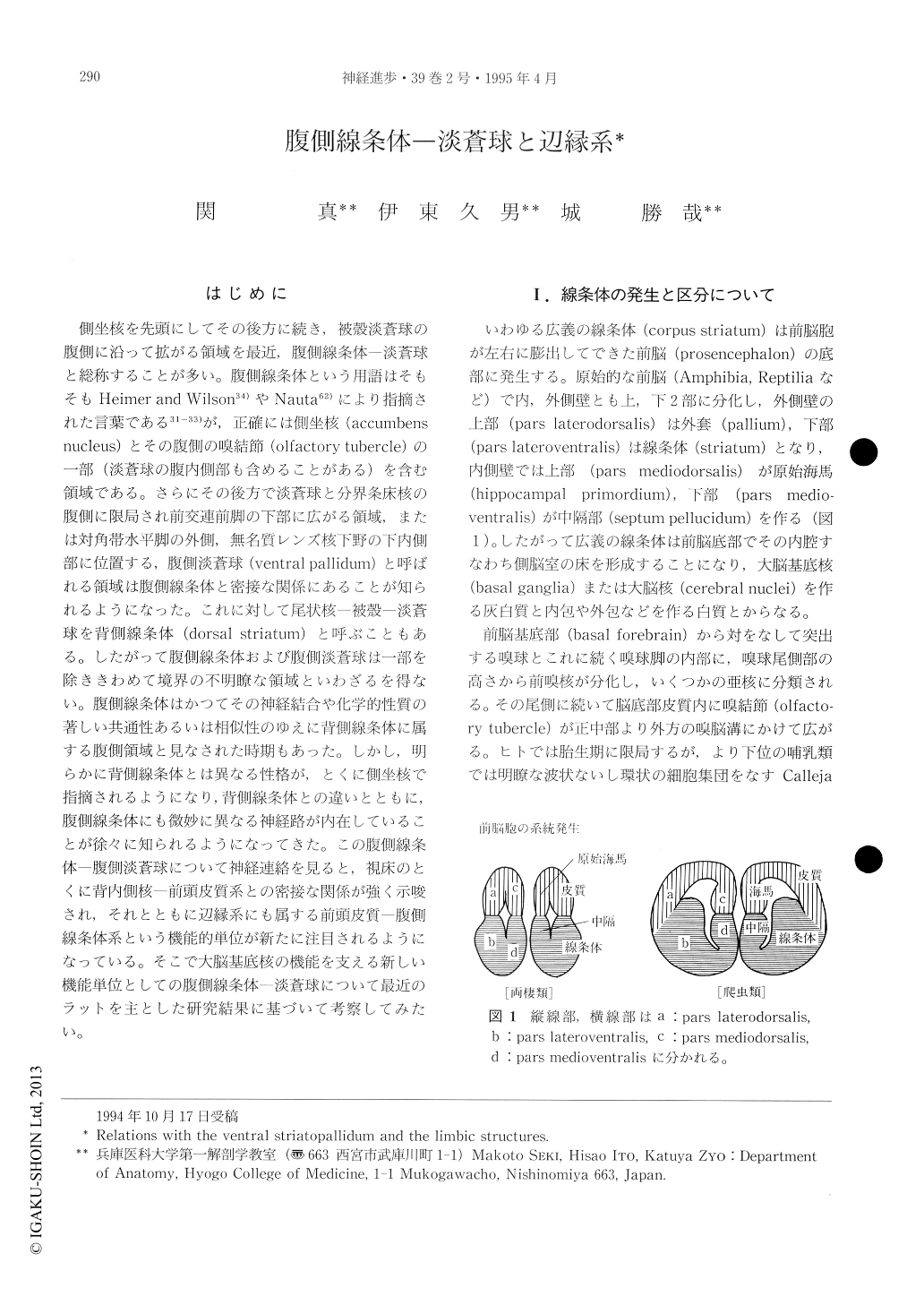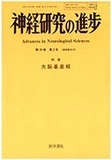Japanese
English
- 有料閲覧
- Abstract 文献概要
- 1ページ目 Look Inside
はじめに
側坐核を先頭にしてその後方に続き,被殻淡蒼球の腹側に沿って拡がる領域を最近,腹側線条体―淡蒼球と総称することが多い。腹側線条体という用語はそもそもHeimer and Wilson34)やNauta62)により指摘された言葉である31-33)が,正確には側坐核(accumbensnucleus)とその腹側の嗅結節(Olfactory tubercle)の一部(淡蒼球の腹内側部も含めることがある)を含む領域である。さらにその後方で淡蒼球と分界条床核の腹側に限局され前交連前脚の下部に広がる領域,または対角帯水平脚の外側,無名質レンズ核下野の下内側部に位置する,腹側淡蒼球(ventral pailidum)と呼ばれる領域は腹側線条体と密接な関係にあることが知られるようになった。これに対して尾状核―被殻―淡蒼球を背側線条体(dorsal striatum)と呼ぶこともある。したがって腹側線条体および腹側淡蒼球は一部を除ききわめて境界の不明瞭な領域といわざるを得ない。腹側線条体はかつてその神経結合や化学的性質の著しい共通性あるいは相似性のゆえに背側線条体に属する腹側領域と見なされた時期もあった。
The ventral striatum, including the accumbens nucleus and part of the olfactory tubercle, has recently been investigated as a component of the circuitry involving the prefrontal cortex, ventral striatopallidum, and dorsomedial thalamic nucleus. Neurochemically distinct subterritories of the accumbens nucleus termed the “core”, “shell”, and “rostral pole” connect individually in a topographically organized fashion with the ventral pallidum, and the dopaminergic pontomesencephalic nuclei.

Copyright © 1995, Igaku-Shoin Ltd. All rights reserved.


